Dynamic regulation of integrin β1 phosphorylation supports invasion of breast cancer cells
- PMID: 40419795
- PMCID: PMC12173946
- DOI: 10.1038/s41556-025-01663-4
Dynamic regulation of integrin β1 phosphorylation supports invasion of breast cancer cells
Abstract
Integrins provide an essential bridge between cancer cells and the extracellular matrix, playing a central role in every stage of disease progression. Despite the recognized importance of integrin phosphorylation in several biological processes, the regulatory mechanisms and their relevance remained elusive. Here we engineer a fluorescence resonance energy transfer biosensor for integrin β1 phosphorylation, screening 96 protein tyrosine phosphatases and identifying Shp2 and PTP-PEST as negative regulators to address this gap. Mutation of the integrin NPxY(783/795) sites revealed the importance of integrin phosphorylation for efficient cancer cell invasion, further supported by inhibition of the identified integrin phosphorylation regulators Shp2 and Src kinase. Using proteomics approaches, we uncovered Cofilin as a component of the phosphorylated integrin-Dok1 complex and linked this axis to effective invadopodia formation, a process supporting breast cancer invasion. These data further implicate dynamic modulation of integrin β1 phosphorylation at NPxY sites at different stages of metastatic dissemination.
© 2025. The Author(s).
Conflict of interest statement
Competing interests: The authors declare no competing interests.
Figures

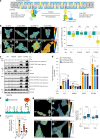

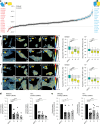

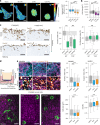

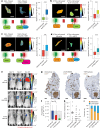
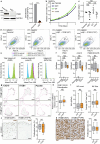
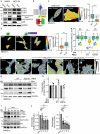
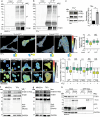
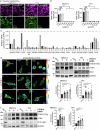
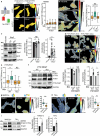
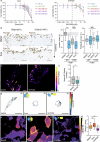

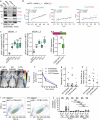
Similar articles
-
Suppression of uPAR retards radiation-induced invasion and migration mediated by integrin β1/FAK signaling in medulloblastoma.PLoS One. 2010 Sep 24;5(9):e13006. doi: 10.1371/journal.pone.0013006. PLoS One. 2010. Retraction in: PLoS One. 2025 Jul 15;20(7):e0328091. doi: 10.1371/journal.pone.0328091. PMID: 20886051 Free PMC article. Retracted.
-
Cdc42-interacting protein 4 promotes breast cancer cell invasion and formation of invadopodia through activation of N-WASp.Cancer Res. 2010 Nov 1;70(21):8347-56. doi: 10.1158/0008-5472.CAN-09-4149. Epub 2010 Oct 12. Cancer Res. 2010. PMID: 20940394 Free PMC article.
-
YAP signaling orchestrates the endothelin-1-guided invadopodia formation in high-grade serous ovarian cancer.Biosci Rep. 2024 Dec 17;44(12):BSR20241320. doi: 10.1042/BSR20241320. Biosci Rep. 2024. PMID: 39495612 Free PMC article.
-
The evolving tumor-associated adipose tissue microenvironment in breast cancer: from cancer initiation to metastatic outgrowth.Clin Transl Oncol. 2025 Jul;27(7):2778-2788. doi: 10.1007/s12094-024-03831-8. Epub 2024 Dec 25. Clin Transl Oncol. 2025. PMID: 39720985 Review.
-
Multiple time points for detecting circulating tumor DNA to monitor the response to neoadjuvant therapy in breast cancer: a meta-analysis.BMC Cancer. 2025 Jan 22;25(1):115. doi: 10.1186/s12885-025-13526-0. BMC Cancer. 2025. PMID: 39844103 Free PMC article.
References
MeSH terms
Substances
Grants and funding
- 346131/Academy of Finland (Suomen Akatemia)
- 841973/EC | EC Seventh Framework Programm | FP7 People: Marie-Curie Actions (FP7-PEOPLE - Specific Programme "People" Implementing the Seventh Framework Programme of the European Community for Research, Technological Development and Demonstration Activities (2007 to 2013))
LinkOut - more resources
Full Text Sources
Medical
Research Materials
Miscellaneous

